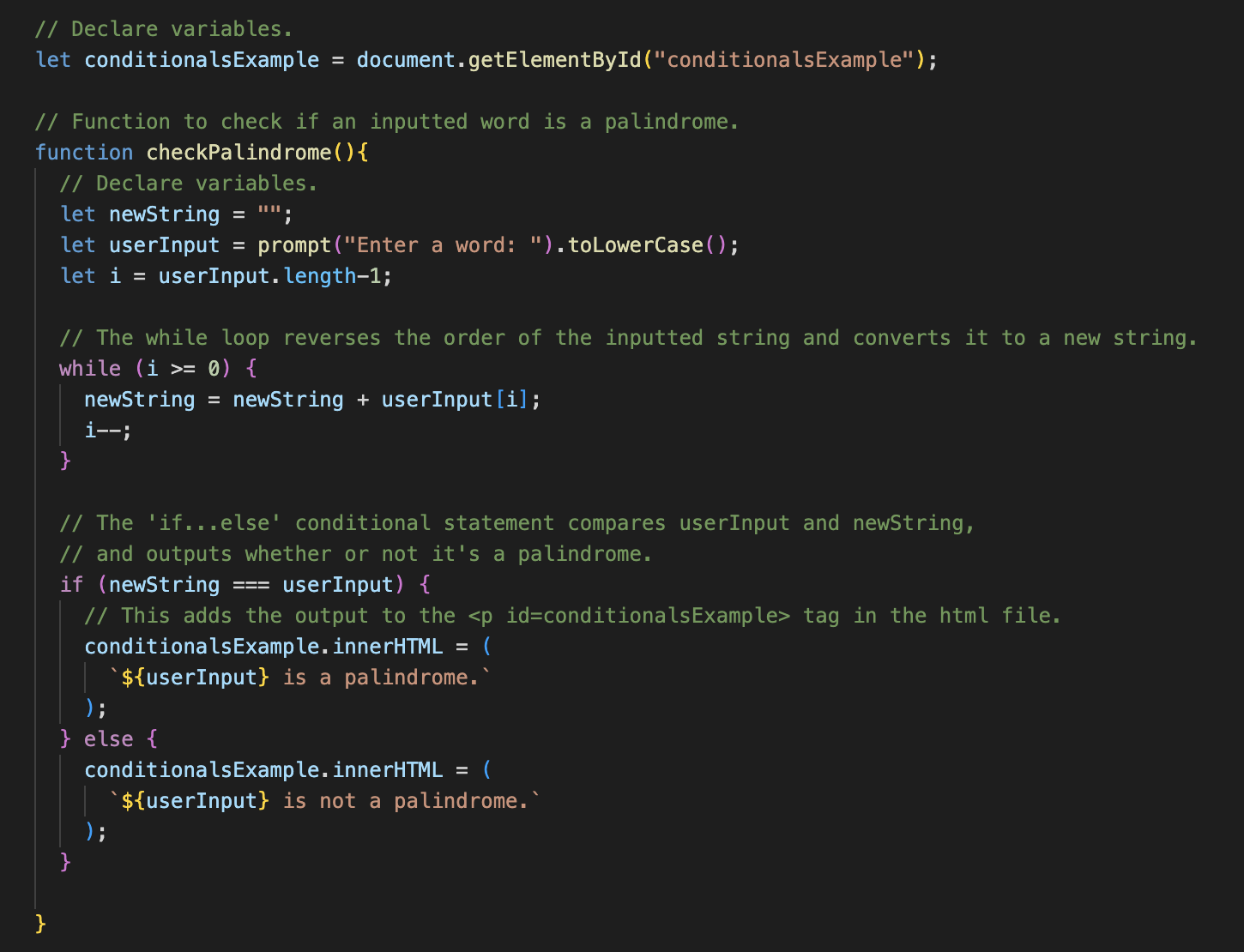Conditional Statements
Conditional statements are used to perform different actions based on different conditions . When writing code, we often want to perform a set of specific or different actions for different decisions.
For example, in a program that functions as a temperature metric converter, we would want to display to the user both their selected temperature and metric, as well as the converted temperature and metric (e.g. if the user wants to convert 32C to F, we would want our program to perform a specific set of actions for converting from Celcius to Fahrenheit). You can use conditional statements to do this.
In JavaScript we have the following conditional statements:
- An if statement: specifies a block of code to be executed, if a specified condition is true.
- An else statement: specifies a block of code to be executed, if the same condition is false.
- An else if statement: specifies a new condition to test, if the first condition is false.
- A switch statement: specifies many alternative blocks of code to be executed.
Example of Conditional Statements
Using the temperature converter example from above, the following JavaScript program prompts a user for a metric and temperature they want converted, and the metric they want to convert to. The program then converts the inputted metric and temperature to the selected metric's temperature, using an if...else statement, and outputs a string stating both the inputted temperature and converted temerature, e.g. 0°C is 32°F.
Step 1:
First, we want to have reassignable variables, so we declare them with the let keyword, and prompt the user to select the metric and temperature they want converted, as well as the metric they want it converted to:

Step 2:
Next, we use the if..else if..else conditional statements to convert the inputted temperature to the desired metric:

